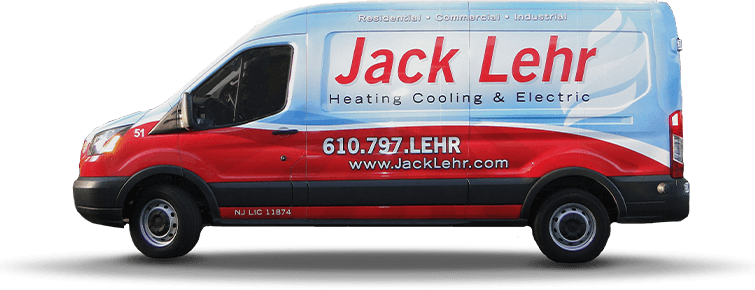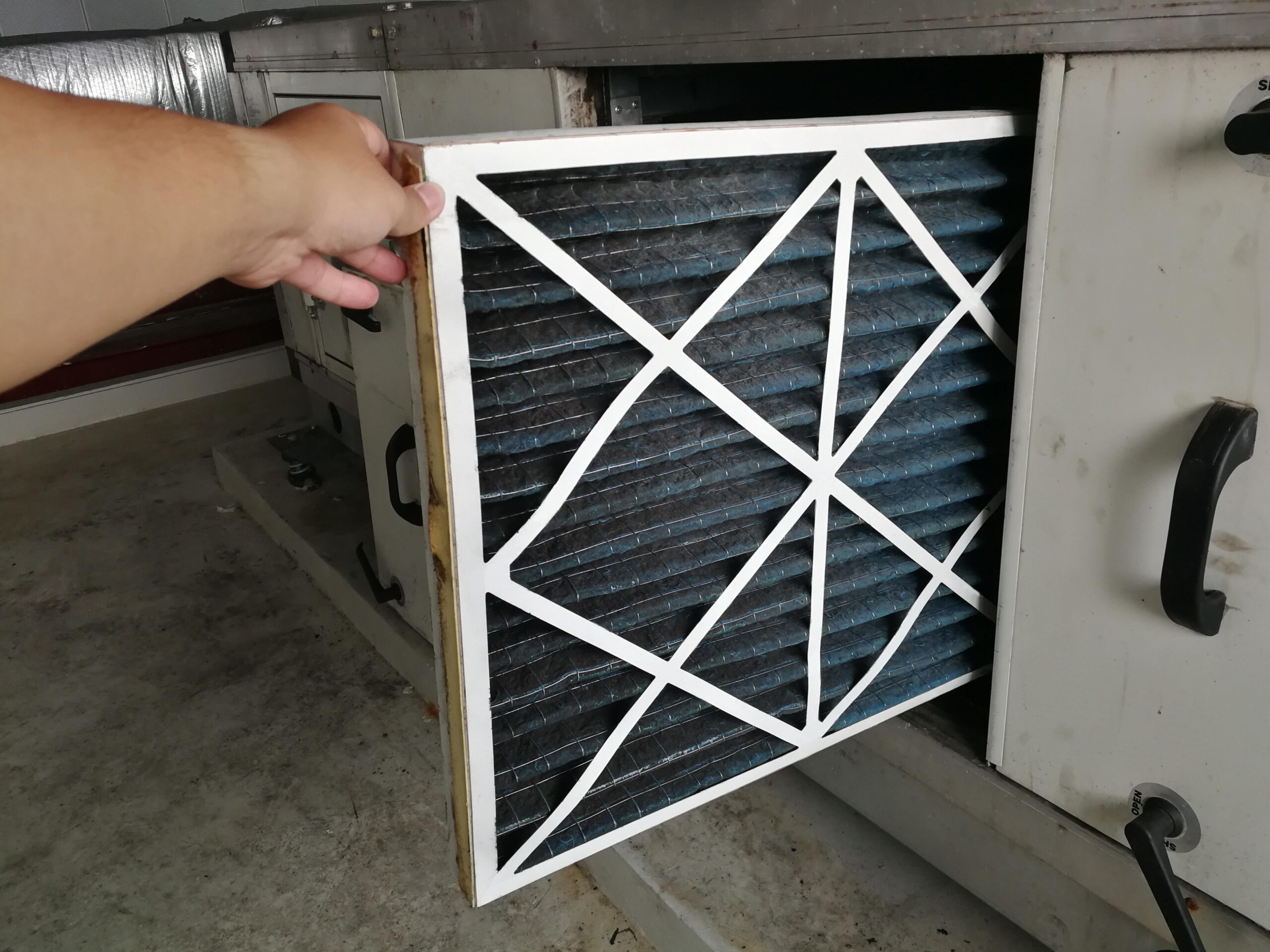Why is My Thermostat Malfunctioning?

As energy demands (and prices) continue to rise, we’re all looking for ways to reduce bills and improve the longevity of our heating and cooling systems. Unfortunately, a lot of the advice homeowners usually receive involves extensive personal effort or even replacing their entire system. But, there may be an easy fix.
Aside from proper maintenance, replacing windows, or adding on to your home, you can improve the efficiency of your system by determining if the problems stem from your thermostat. Your thermostat serves as the central control hub for your HVAC system. When it malfunctions, it disrupts the balance of your home’s climate, potentially leaving you uncomfortable and frustrated. Having a better understanding of your thermostat can restore harmony and comfort to your home without resorting to expensive, possibly unnecessary repairs.
Common Symptoms of a Malfunctioning Thermostat
Recognizing the signs of a potentially malfunctioning thermostat is crucial for maintaining a comfortable home environment. Here are some common symptoms to watch for:
Inaccurate Temperature Readings
One of the most noticeable signs of a malfunctioning thermostat is incorrect temperature readings. If you have set your thermostat to a specific temperature, but the actual temperature in your home does not match, it could indicate an issue with the thermostat’s sensor or calibration.
HVAC Not Coming On At All
A malfunctioning thermostat may inaccurately read the home’s temperature and fail to turn your HVAC system on, leaving your home too cold or hot. If you experience issues such as the HVAC system’s fan continuously running or not turning on, it could indicate a different issue, such as a problem with the HVAC unit’s control board.
Unresponsive Controls
If your thermostat becomes unresponsive or fails to register changes when you adjust the settings, it could be a sign of electrical issues or internal damage.
A Frozen or Unresponsive Display
Similarly to unresponsive controls, if the display is frozen or unresponsive, it may indicate a problem with the thermostat’s power source, wiring, or internal components.
Rapid Cycling
Rapid cycling occurs when your heating or cooling system turns on and off frequently within a short period. In rare cases, this may be due to incorrect thermostat settings or a malfunctioning component. However, most of the time, this will be caused by the HVAC equipment, requiring evaluation by a professional technician.
Fluctuating Temperatures
If you notice sudden fluctuations in temperature throughout your home, it could result from a malfunctioning thermostat failing to regulate the HVAC system properly. However, this is not often caused by the thermostat itself but by poor placement, insulation, or air circulation issues in the home.
If you experience any of these thermostat symptoms, it’s essential to address the issue immediately to prevent further discomfort and potential damage to your HVAC system.
Diagnosing & Resolving Possible Thermostat Issues
There could be a few common issues causing a malfunctioning thermostat. The following are some of the most frequent problems you may encounter:
Electrical Issues
Electrical issues are a common culprit behind thermostat malfunctions, whether loose wiring connections, tripped circuit breakers, or blown fuses. If you suspect an electrical problem, contact an HVAC professional to perform the following troubleshooting steps:
Inspect Circuit Breakers
Before the HVAC technician comes to your home, locate your panel and check if the breaker your HVAC system connects to is tripped. If so, reset the breaker by flipping it to the “off” position and back to the “on” position.
Check Wiring Connections
If the issue is not caused by a tripped breaker and continues, the HVAC technician will inspect all wiring connections at the thermostat and the HVAC system to ensure they are securely attached, tightening any loose connections if necessary. They will shut off all electricity to the unit before handling the wires to prevent possible injury or safety hazards.
Replace Blown Fuses
If your HVAC system is equipped with fuses, the technician will check them for signs of damage or wear. Any blown fuses will be replaced with new ones of the same amperage rating. This solution is also best left to the professionals as these fuses are located inside the equipment control area with many electrical components that can be easily damaged without proper care.
Sensor Problems
Thermostats rely on sensors to measure the temperature in your home. Over time, dust or dirt accumulation on these sensors can interfere with their functionality, leading to inaccurate temperature readings. In cases of heavy dirt accumulation, the ideal solution is to replace the thermostat for the best results.
If dirt and dust accumulation does not appear to be the main issue, you may be able to manually recalibrate the thermostat. The steps for doing so will vary per model, so consult your thermostat’s user manual for instructions on recalibrating if necessary.
Battery Issues
Many thermostats on the market rely on batteries to power their operation. The thermostat may malfunction or become unresponsive if the batteries are low or depleted. To address battery issues, simply replace the batteries.
Open the battery compartment on your thermostat and replace the old with new, fresh batteries. Be sure to use the correct type and size recommended by the manufacturer, and ensure they are placed correctly per indicators.
Placement Issues
The placement of your thermostat within the home can also affect its performance. Placing the thermostat near heat sources, direct sunlight, or drafts can lead to inaccurate temperature readings. To resolve placement issues:
Reposition Your Thermostat
If possible, relocate the thermostat to a more suitable location away from anything that will cause an incorrect temperature reading. Ideally, it should be installed on an interior wall in a central area of the home. Whether you use a battery-powered or hard-wired unit, a wire will still need to be run to the new thermostat location for complete functionality. If you decide to go with a completely wireless thermostat, wiring is unnecessary. Consult with an experienced HVAC technician to find the right thermostat for your home comfort needs.
User Operation Mistakes
Not all thermostat issues are caused by the unit itself but rather by an operational error by the user. Whenever you or someone else in the home is operating the thermostat, be careful to avoid the following mistakes.
Allowing Your HVAC Fan to Start & Stop Continuously
This is not only a costly mistake but could eventually lead to a repair or replacement situation years before it should even be an issue. We advise customers to run HVAC fans 24/7 for the best comfort, especially models with variable speed capabilities. In general, the motors will actually last longer when left on. Starting and stopping the motor is much harsher on the components and is what actually shortens the motor life.
Using an Outdated Thermostat
Your HVAC might not need to be replaced anytime soon, but your thermostat could be another story. Using an outdated thermostat could have you missing out on the latest smart settings and energy savings. It could be subjecting your home to substandard comfort and poor temperature readings that cause your HVAC system to be overworked.
Improper Thermostat Settings
When adjusting your comfort settings, you may end up setting your thermostat too high or too low. While it may be tempting to crank up the heat to 75 degrees in the winter or set the AC to 65 degrees in the summer, this can result in temperature swings and unnecessary energy consumption. For the best balance between comfort and energy savings, it’s best to maintain settings between 68-74°F.
Tips for Getting the Most from Your Thermostat: Preventing Problems
While not every issue your thermostat may encounter can be prevented, there are steps you can take to keep it operating effectively to maintain a comfortable home and prevent potentially costly damage to your HVAC system.
Regular Thermostat Maintenance
Just like any other appliance, your thermostat benefits from regular maintenance. Periodically clean the exterior of the thermostat to remove dust and debris that can accumulate over time. When you schedule professional HVAC maintenance services to inspect and tune-up your heating and cooling systems, they should also do the same for your thermostat.
Utilize Programmable Settings
If your thermostat is equipped, take advantage of the programmable settings to create customized heating and cooling schedules based on your daily routine. By programming your thermostat to adjust temperatures automatically when you’re away or asleep, you can optimize energy usage and reduce utility costs without sacrificing comfort. Programmable settings are not recommended for use with most heat pump systems.
Smart Thermostat Upgrade
Consider upgrading to a smart thermostat with advanced features like Wi-Fi connectivity, learning capabilities, and remote access. Smart thermostats offer greater convenience, energy savings, and control over your indoor environment.
When to Contact a Professional for a Potential Thermostat Problem
If you’ve been troubleshooting the thermostat and the issue is still not resolved, or the same issues continue to occur, it’s probably time to contact a qualified HVAC professional to ensure the system is functioning properly. Here are some signs that indicate it’s time to reach out for help:
Persistent Thermostat Malfunctions
If your thermostat continues to malfunction despite attempting the proper troubleshooting steps, the underlying issue may be more complex and require professional diagnosis and repair.
Electrical Problems
Some electrical issues, such as faulty wiring or a blown fuse, can pose a safety hazard and should only be addressed by a trained technician to prevent further damage to your HVAC system, home, or even yourself.
Unresponsive HVAC System
If your heating or cooling system fails to respond to the thermostat’s commands, it may indicate a problem with the HVAC equipment itself rather than the thermostat. A professional technician can properly diagnose and repair issues within the system as needed.
Calibration or Programming Issues
If you suspect that your thermostat is not accurately calibrated or programmed, it’s best to enlist the help of a knowledgeable technician to recalibrate the device properly and adjust its settings for the most efficient use.
Time for a Replacement or Upgrade
For any thermostat that is outdated, damaged, or simply being replaced with a newer, upgraded model, an HVAC technician can assist with the installation, setup, and configuration.
Safety Concerns
Any signs of overheating, burning smells, or unusual noises coming from your thermostat should be addressed immediately by a professional to ensure the safety of your home and family.
Complex HVAC Systems
If you have a complex HVAC system with multiple zones, heat pumps, or other specialized equipment, consult with a professional who has experience working with these systems to ensure the thermostat is properly installed and functioning as it should.
Contacting a professional HVAC technician when necessary ensures that any potential thermostat problems are addressed immediately and effectively to restore comfort and efficiency to your home.
Need Help Troubleshooting Your Thermostat? Jack Lehr Can Help
If you’ve noticed increased heating or cooling costs but know for a fact that your system is working optimally, a thermostat problem might be the answer. The pros at Jack Lehr are ready to help you resolve your thermostat issues. Don’t let your home’s temperature be a source of discomfort. Whether you need assistance with your thermostat or want to schedule an HVAC appointment with one of our specialists, we’re here to help. Trust us to bring comfort back into your home!
Questions or need more information?
Contact Us


We Treat You Like Family
When you choose Jack Lehr Heating Cooling & Electric, you’ll benefit from our:
When you choose Jack Lehr Heating Cooling & Electric, you’ll benefit from our:
- 50+ years of experience
- Our installation and service guarantees
- Top-of-the-line products
- Respect for your home or business
- Financing options
- And much more!



